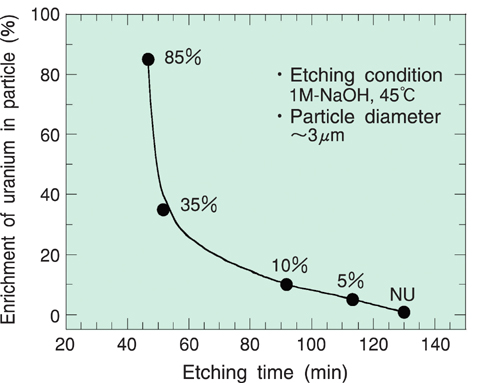
Fig.7-12 Microscopic images of FTs created by uranium particles: (a) natural,(b) 10% enriched, (c) 85% enriched

Fig.7-13 Correlation between the time until a fission track appears by etching and the enrichment of uranium in particle

Fig.7-14 Microscopic images of FT morphologies (d, f) and of uranium particles (e, g) corresponding to the FT
Environmental sample analysis technique was adopted by the International Atomic Energy Agency (IAEA) as a new technique for the strengthened safeguards system to detect undeclared nuclear activities. In the technique, particle analysis, which measures isotope ratios of uranium and/or plutonium in individual particles, is an effective tool for safeguards because the particle analysis can surmise the history of the nuclear activities in the past.
The particle analysis by a fission track (FT) technique combined with thermal ionization mass spectrometry (TIMS) can measure the isotope ratios of uranium particles smaller than one micrometer in diameter (equivalent to about 4 pg for uranium). Fig.7-12 shows the microscopic images of FTs of uranium particles with different enrichment irradiated with thermal neutrons. By observing the FTs, a particle containing fissile materials can be detected with high sensitivity from an environmental sample taken from nuclear facilities.
The number of FTs is dependent on the size as well as the 235U enrichment of uranium particle. The etching rate of FTs by the uranium particle increases with the 235U enrichment of uranium particles in the case of irradiation with a fixed neutron fluence. This implies that the detection of uranium particles with a specific enrichment is possible by controlling the etching time. Fig.7-13 shows the correlation between the time until a fission track appears by etching and the enrichment of uranium in particle. The etching time to detect the FT becomes shorter with increase in 235U enrichment. This result indicates, for example, that the uranium particles with an enrichment of more than 25% and 10% will be detected mainly by the etching time is set to 60 min and 100 min, respectively.
In the case of a mixture of highly enriched uranium particles with small size and lowly enriched particles with large size, it is difficult to distinguish between the two solely by controlling the etching time. The size of both the particles is compared in this case. When the numbers of FTs are comparable, it is clear that the smaller particle has the higher enrichment (Fig.7-14). In the real sample containing particles of various sizes, we analyze the particles which made size distribution uniform roughly by a suction filter.
Comparing the FT morphology and the particle size enables the screening of the uranium particles according to their enrichment. Particularly, even when uranium particles with a higher 235U enrichment are scarce in a myriad of uranium particles, it is possible to detect them reliably. The uranium particles detected are transferred onto a TIMS filament, and the isotope ratios are measured precisely. The FT-TIMS method developed has attracted the attention of IAEA as a strong tool for safeguards.